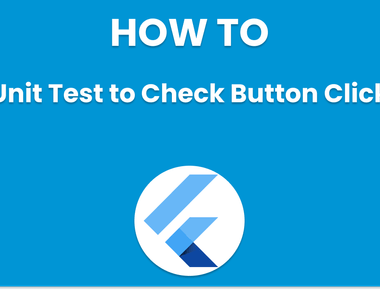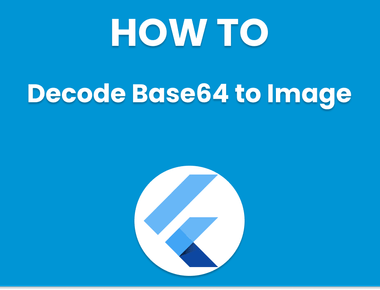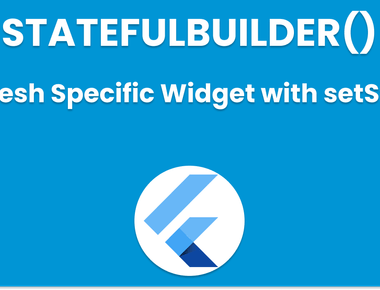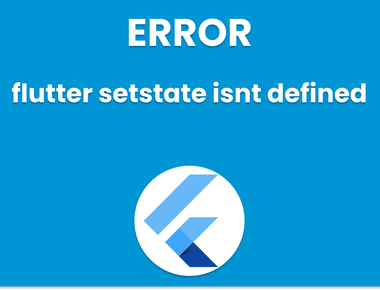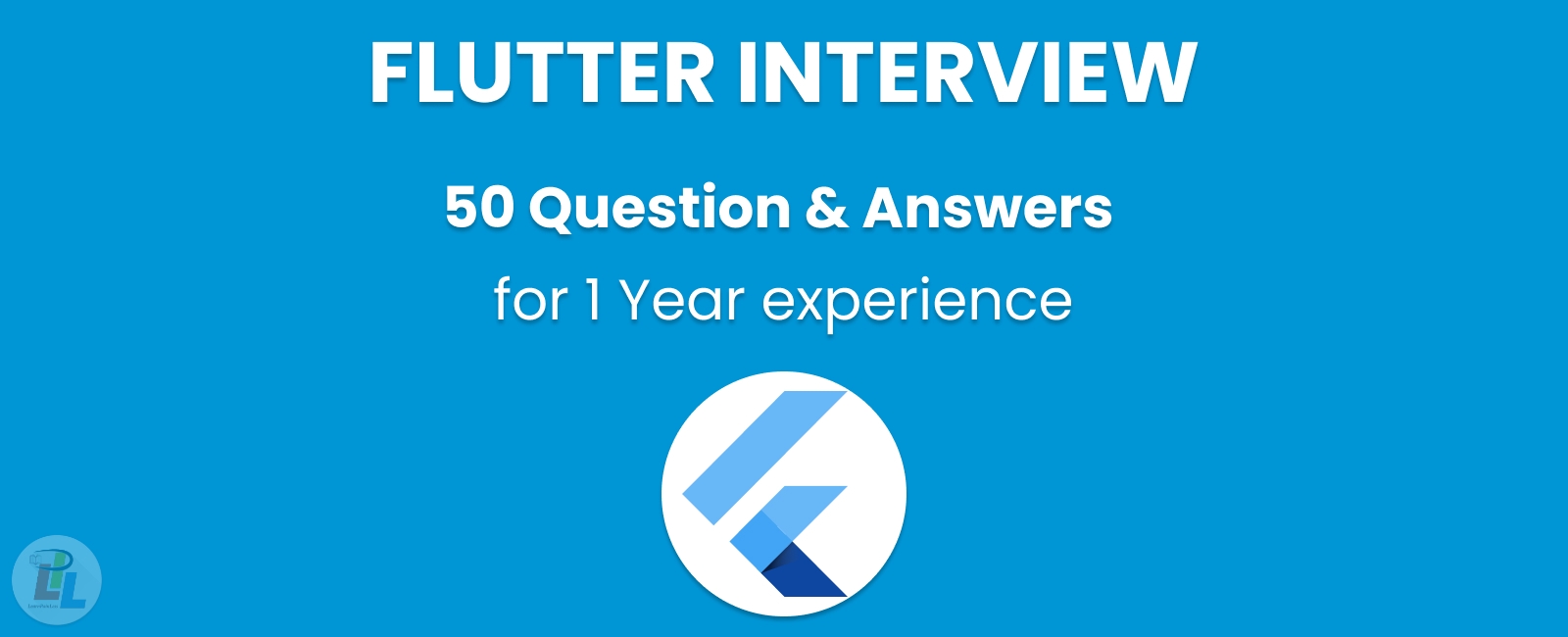
Are you looking for Flutter interview question for a 1 year experienced developer? Here are 50 commonly asked interview questions about the popular open-source UI framework – Flutter. Covering topics such as Dart language fundamentals, state management strategies, best practices, and more.
50 Flutter Interview Question
What is Flutter and how does it differ from other mobile development frameworks?
- Flutter is a mobile development framework created by Google. It uses the Dart programming language and allows for the creation of high-performance, visually attractive apps for both iOS and Android. It differs from other frameworks such as React Native and Xamarin in that it uses a unique rendering engine and includes its own widgets, rather than relying on native ones.
What are Flutter widgets and how do they differ from traditional mobile app elements?
- Widgets in Flutter are the basic building blocks of a Flutter app’s user interface. They are similar to elements or components in other mobile development frameworks, but they are built using the Flutter framework and include a wide variety of customizable options. They are different from traditional mobile app elements because they are more expressive and offer more control over the app’s layout and visual elements.
What is the Dart programming language and how is it used in Flutter development?
- Dart is a programming language created by Google. It is used to build mobile, web, and desktop applications. In Flutter, Dart is used to build the app logic and control the app’s flow and behavior. Dart code is compiled ahead-of-time (AOT) into native code for both iOS and Android, providing good performance.
Outline the lifecycle of
StatefulWidget?Creation: When a
StatefulWidgetis created, the framework calls thecreateState()method of the widget, which returns an instance of a separate State object. ThecreateState()method is responsible for initializing the widget’s state.Initialization: The framework then calls the
initState()method of the State object, which is responsible for initializing any resources that the widget requires. This is the first time thebuild()method is called.Building: The framework calls the
build()method of the State object to create the widget’s visual representation. Every time the widget needs to be redrawn on the screen, this method is called.Updating: When the widget’s state changes, the framework calls the
setState()method, which schedules a rebuild of the widget. When the rebuild is triggered, thebuild()method is called again, passing in the new state.Destruction: When a widget is removed from the widget tree, the framework calls the
dispose()method of the State object. This method is responsible for cleaning up any resources the widget used before it was destroyed.It’s important to note that the setState() method can be called multiple times during the lifecycle of a StatefulWidget, but the initState() and dispose() methods are called only once each.
Can you explain the concept of “hot reload” in Flutter and its benefits?
- Hot Reload is a feature in Flutter that allows developers to see the changes they make in the code immediately in the app, without the need to manually stop and restart the app. This can greatly speed up the development process, as developers can test their changes and iterate on them more quickly.
Give me 4 advantages of using Flutter?
- Cross-platform development: Flutter allows for the development of apps for both iOS and Android with a single codebase, saving time and resources.
- Hot Reload: With Flutter’s “hot reload” feature, developers can quickly experiment, build UIs, add features, and fix bugs faster.
- High performance: Flutter’s use of the Dart programming language and its widgets allows apps to run smoothly at 60 frames per second.
- Customizable widgets: Flutter includes a rich set of customizable widgets, which allows for a unique and expressive UI.
Give me some limitations of Flutter?
- Limited third-party library support: The Flutter ecosystem is relatively new and still growing, so the number of available third-party libraries is limited compared to more established platforms like React Native or Xamarin.
- Larger app size: Since Flutter includes all the required components to run an app in the app binary, the app size tends to be larger than native apps.
- Limited support for older android versions: Flutter requires Android 4.1 or newer, which means it can’t be used to support older devices running on Android 4.0 or older versions.
- Limited developer pool: As Flutter is relatively new, the pool of developers experienced in working with the framework is relatively small, making it difficult to find developers to work on your app.
- Complexity in handling platform-specific features: Some features may be harder to implement in Flutter as it only sometimes has direct access to platform-specific APIs.
When would you use profile mode in Flutter?
- Developers use profile mode to maintain debugging abilities and analyze an app’s performance while it’s tested. Candidates should know that compiling profile mode requires the flutter run —profile command.
What is Container class in Flutter?
- The
Containerclass in Flutter is a convenience widget that allows developers to easily create a box with some padding and a specified width, height, and color. It is often used as a parent widget to hold and position other widgets.
- The
What is a SizedBox in flutter?
- In Flutter, the
SizedBoxwidget is a simple container that can specify a fixed width and/or height. It is a convenience widget that can be used to add empty space between widgets or force a widget to have a specific size.
- In Flutter, the
Explain how a SizedBox is different from a Container?
In Flutter, both SizedBox and Container widgets are used to hold and position other widgets, but they have different purposes and behaviors.
A Container widget is a general-purpose container that can be used to hold and position other widgets, set the size and color of the container, and apply padding and margins. It can also be used to apply a specific width and height. It also allows setting decorations such as background images, gradients, etc.
A SizedBox widget, on the other hand, is a simple container used to specify a fixed width and/or height. It does not take any space in the layout itself. It just influences the size of its child. It’s commonly used to add empty space between widgets or force a widget to have a specific size.
How does the layout and rendering process work in Flutter?
- In Flutter, the layout and rendering process is handled by the framework itself, rather than relying on the native widgets and layout managers of the underlying platform. This allows for more consistent and predictable behavior across different platforms. The layout is defined using a tree of widgets, with the root widget being the parent of all other widgets in the app. The framework then uses this widget tree to calculate the layout and paint the widgets on the screen.
How does Flutter handle the issue of different screen sizes and resolutions on different devices?
- Flutter handles different screen sizes and resolutions by using a flexible layout system based on constraints and percentages, rather than fixed pixel values. This allows the widgets and layout to adjust to the available space and look good on any screen size or resolution. Additionally, Flutter provides a set of built-in widgets that can automatically adapt to different screen sizes and aspect ratios, such as the
AspectRatioandFractionallySizedBoxwidgets.
- Flutter handles different screen sizes and resolutions by using a flexible layout system based on constraints and percentages, rather than fixed pixel values. This allows the widgets and layout to adjust to the available space and look good on any screen size or resolution. Additionally, Flutter provides a set of built-in widgets that can automatically adapt to different screen sizes and aspect ratios, such as the
When should you use keys in Flutter?
- Can your applicants explain that keys are best used when developers want to preserve a modified widget’s state? They may also explain that developers can use keys to reorganize widget connections and widget trees, particularly when they contain stateful widgets.
Explain what
mainAxisAlignmentis?- In Flutter, the
mainAxisAlignmentproperty of aRoworColumnwidget is used to align the child widgets along the container’s main axis. The main axis of aRowis horizontal, and the main axis of aColumnis vertical.
- In Flutter, the
Explain what
crossAxisAlignmentis?- In Flutter, the
crossAxisAlignmentproperty of aRoworColumnwidget is used to align the child widgets along the container’s cross-axis. The cross-axis of aRowis vertical, and the cross-axis of aColumnis horizontal.
- In Flutter, the
Explain why Futures are used in Dart?
- In Dart and Flutter, a
Futureis an asynchronous operation that can complete in the future with a value or an error. It represents a single computation or action that is not completed immediately but is expected to be completed at some point in the future.
- In Dart and Flutter, a
What are some best practices for designing and developing apps using Flutter?
- Some best practices for designing and developing apps using Flutter include:
- Using the built-in widgets and layout elements provided by the framework, rather than trying to recreate them from scratch.
- Following the Material Design guidelines for visual consistency and usability.
- Breaking the app down into smaller, reusable widgets for easier maintenance and testing.
- Using the provider pattern for state management.
Explain what pubspec.yaml files are for?
pubspec.yamlfiles are used in Flutter projects to manage dependencies. It is a configuration file containing the package’s metadata, including the package name, version, and dependencies.The file lists the package’s dependencies, including both the Dart packages and the assets that the package needs to run, such as images and fonts.
When you run the
flutter packages getcommand, it reads thepubspec.yamlfile and downloads the dependencies specified in the file, making them available to your app.This file also allows you to specify the minimum version of the flutter sdk that your package supports and specify assets, fonts and other configurations.
Additionally, developers can also use this file to specify the version of the package, the author, and other useful information when publishing a package on the Dart Package Repository.
Explain how runApp() is different from main()?
In Flutter,
runApp()andmain()are separate but related functions.main()is the app’s entry point and is where the Dart runtime starts executing the app’s code. It is the standardmain()function in any Dart program.runApp()is a Flutter-specific function used to start the Flutter app and attach it to the screen. It takes a widget as an argument and uses it as the root widget of the app.main()function is responsible for defining and initializing the app, setting up the dependencies and, calling therunApp()function, passing the root widget of the app as an argument.
What is the use of
Streams?- In Flutter, a
Streamis a way to handle asynchronous data that can be produced over time, such as user input, network responses, or sensor data. AStreamis a sequence of asynchronous events, and a value or an error represents each event.
- In Flutter, a
How does Flutter handle app localization and internationalization?
- Flutter provides a set of internationalization (i18n) and localization (l10n) libraries that can be used to support different languages and cultures in the app. These libraries provide support for loading localized strings, formatting dates, times, and numbers, and handling right-to-left languages.
How does Flutter handle navigation and routing in the app?
- Flutter uses a navigation stack to handle navigation and routing in the app. Developers can push new routes onto the stack to navigate to new screens, and pop routes off the stack to navigate back. Flutter also provides a Navigator widget that can be used to manage the navigation stack and handle transitions between routes.
How would you make sure you’re using all features of Flutter?
- Applicants should know that to make sure they’re making full use of all the features of Flutter, they can refer to the Flutter documentation and use different resources available online.
How does Flutter handle HTTP requests and networking?
- Flutter provides a built-in
httppackage for making HTTP requests and handling responses. You can use the package to makeGET,POST,PUT,DELETErequests, and handle responses withJSONorXML. You can also use external libraries such asdioorchopperfor networking, they provide more advanced features like caching, request cancelation, retry and more.
- Flutter provides a built-in
Explain what the setState() method does?
The
setState()method is a built-in method in Flutter that allows you to update the state of aStatefulWidget.When a user interacts with a
StatefulWidget(e.g. by tapping a button), the widget’s state may need to change. For example, a button’s text may change from “Like” to “Unlike” when pressed.The
setState()method is used to indicate that the widget’s state has changed and that the widget should be “rebuilt” or “redrawn” on the screen with the updated state. ThesetState()method takes one argument, a callback function specifying the changes to be made to the widget’s state.
How does Flutter handle storage and database management?
- Flutter provides a built-in
sqflitepackage for storing data locally on the device. It provides a way to store and retrieve data in a SQLite database. Additionally, there are other popular packages such ashiveandshared_preferencesthat provide more advanced features for storing and managing data.
- Flutter provides a built-in
Can you explain the concept of streams in Flutter and how they are used?
Streamsin Flutter are used to handle asynchronous data, such as user input or network responses. A stream is a sequence of asynchronous events. It can be used to listen to data and react to it as it arrives. In Flutter, streams are implemented using thedart:asynclibrary and can be used with theStreamBuilderwidget to automatically rebuild the UI when new data arrives.
How can we test our Flutter app?
- Flutter provides several ways to test your app:
- Unit testing: you can use
testpackage to create unit tests for your app’s business logic. - Widget testing: you can use
flutter_testpackage to create widget tests for your app’s UI. - Integration testing: you can use
flutter_driverpackage to run integration tests that interact with your app as a user would.
How can we deploy our Flutter app to different app stores?
- Flutter provides a simple command-line tool called
flutter buildto build the app for different platforms. You can use it to build the app for iOS and Android. Once the app is built, you can then upload it to the App Store or Google Play Store for distribution.
- Flutter provides a simple command-line tool called
- How can Flutter be used for web development?
- Flutter can be used for web development by using the
flutter_webmodule, which allows you to run Flutter apps in the browser using the same codebase as your mobile app. This means that you can use the same widgets, layout, and logic for both web and mobile apps, making it easier to develop and maintain cross-platform apps.
- Flutter can be used for web development by using the
- How can we implement push notifications in Flutter?
- To implement push notifications in Flutter, you can use the
firebase_messagingpackage. It provides an easy-to-use API that allows you to receive and handle push notifications in your app. You can also use other popular packages such asonesignalorflutter_local_notificationsfor push notifications.
- To implement push notifications in Flutter, you can use the
- Explain what a ticker is in Flutter?
- Applicants may explain that tickers send signals at constant frequencies to help developers determine the frequency of animation refreshes in Flutter.
- How can we implement in-app purchases in Flutter?
- To implement in-app purchases in Flutter, you can use the
in_app_purchasepackage. It provides an easy-to-use API that allows you to handle in-app purchases on both iOS and Android. You can also use other popular packages such asbilling_clientfor in-app purchases.
- To implement in-app purchases in Flutter, you can use the
- How does Flutter handle accessibility for people with disabilities?
- Flutter provides built-in support for accessibility features such as screen readers, large fonts, and high contrast mode. You can use the
Semanticswidget to provide additional information about the interface to assistive technologies, such as screen readers. Also, you can use theFocuswidget to handle keyboard navigation and accessibility in forms.
- Flutter provides built-in support for accessibility features such as screen readers, large fonts, and high contrast mode. You can use the
- How can we implement analytics in Flutter?
- To implement analytics in Flutter, you can use a popular package such as
firebase_analyticsorflutter_analyticsto track user behavior and app usage. You can also use other popular analytics services like Google Analytics or Mixpanel. These packages provide easy-to-use APIs that allow you to track events and user behavior in your app.
- To implement analytics in Flutter, you can use a popular package such as
- How can we implement Splash Screen in Flutter?
- To implement a splash screen in Flutter, you can use the
SplashScreenpackage. It provides a simple way to show a splash screen while your app is loading. You can customize the splash screen by providing a background color, logo, and text. Alternatively, you can create your own splash screen by using theStackwidget and placing anImagewidget as the background, and then using aFutureBuilderwidget to wait for the app to be initialized before navigating to the next screen.
- To implement a splash screen in Flutter, you can use the
- How can we implement image picker and cropper in Flutter?
- To implement an image picker and cropper in Flutter, you can use the
image_pickerpackage to pick an image from the gallery or camera and theimage_cropperpackage to crop the selected image. Both packages provide an easy-to-use API that allows you to pick and crop images in your app.
- To implement an image picker and cropper in Flutter, you can use the
- How can we implement Push notifications with Firebase Cloud Messaging in Flutter?
- To implement push notifications with Firebase Cloud Messaging (FCM) in Flutter, you can use the
firebase_messagingpackage. It provides an easy-to-use API for using FCM to send and receive push notifications. You can use it to register the app with FCM, subscribe to topics, and handle incoming push notifications.
- To implement push notifications with Firebase Cloud Messaging (FCM) in Flutter, you can use the
- How can we implement Background Location tracking in Flutter?
- To implement Background Location tracking in Flutter, you can use the
locationpackage. It provides an easy-to-use API for getting the device’s current location and tracking location changes in the background. You can use it to get the device’s current location and then track the location changes in the background, even when the app is closed.
- To implement Background Location tracking in Flutter, you can use the
How can we implement a Drawer in Flutter?
- To implement a Drawer in Flutter, you can use the
Drawerwidget. It provides a simple way to show a side menu containing navigation links or other options. You can customize the drawer by providing a background color, logo, and text. You can also use theDrawerHeaderandDrawerItemwidgets to create a more structured and customized drawer.
- To implement a Drawer in Flutter, you can use the
How can we implement a Bottom Navigation Bar in Flutter?
- To implement a Bottom Navigation Bar in Flutter, you can use the
BottomNavigationBarwidget. It provides a simple way to show a navigation bar at the bottom of the screen containing navigation links or other options. You can customize the bottom navigation bar by providing different icons and labels for each option. Additionally, you can also use theBottomNavigationBarItemwidget to create a more structured and customized bottom navigation bar.
- To implement a Bottom Navigation Bar in Flutter, you can use the
How can we implement a TabBar in Flutter?
- To implement a TabBar in Flutter, you can use the
TabBarwidget. It provides a simple way to show a tab bar at the top of the screen containing navigation links or other options. You can customize the tab bar by providing different icons and labels for each option. Additionally, you can also use theTabwidget to create a more structured and customized tab bar.
- To implement a TabBar in Flutter, you can use the
How can we implement a Carousel in Flutter?
- To implement a Carousel in Flutter, you can use the
carousel_sliderpackage. It provides an easy-to-use API for creating a carousel of images or other widgets. You can use it to show a series of images or other widgets in a scrolling view, and customize the carousel by providing different options such as the animation duration, autoplay, and more.
- To implement a Carousel in Flutter, you can use the
How can we implement a Map in Flutter?
- To implement a Map in Flutter, you can use the
google_maps_flutterpackage. It provides an easy-to-use API for showing Google Maps in your app. You can use it to show a map view, add markers, change the camera position, and customize the appearance of the map. Additionally, you can also use other packages likeflutter_mapormapbox_glto implement a map feature in your app.
- To implement a Map in Flutter, you can use the
What are unit tests?
Unit tests are a way to test individual units of code, such as individual functions or classes, to ensure that they behave as expected. In Flutter, unit tests are used to test the logic and behaviour of the app’s code and to verify that the app behaves correctly in different scenarios.
Flutter provides a built-in testing framework that makes writing and running unit tests for your app easy. The framework is based on the Dart
testpackage, allowing you to test your app’s widgets, state, and logic in a simulated environment.To write a unit test in Flutter, you create a separate
.dartfile in the test folder and use thetest()function to define the test. Thetest()function takes two arguments: a string describing the test and a callback function that contains the test logic.
How can we implement a Video Player in Flutter?
- To implement a Video Player in Flutter, you can use the
video_playerpackage. It provides an easy-to-use API for playing videos in your app. You can use it to play videos from different sources such as a network or a file, customize the playback controls, and handle video events such as completion or error.
- To implement a Video Player in Flutter, you can use the
How can we implement a Firebase Authentication in Flutter?
- To implement Firebase Authentication in Flutter, you can use the
firebase_authpackage. It provides an easy-to-use API for using Firebase Authentication in your app. You can use it to authenticate users using different methods such as email and password, phone number, and more. Additionally, you can also use other packages likegoogle_sign_inorflutter_facebook_loginto implement Firebase Authentication feature in your app.
- To implement Firebase Authentication in Flutter, you can use the
How can we implement a Firebase Cloud Storage in Flutter?
- To implement Firebase Cloud Storage in Flutter, you can use the
firebase_storagepackage. It provides an easy-to-use API for using Firebase Cloud Storage in your app. You can use it to upload and download files, handle progress, and manage files in the storage.
- To implement Firebase Cloud Storage in Flutter, you can use the
How can we implement a Firebase Cloud Firestore in Flutter?
- To implement Firebase Cloud Firestore in Flutter, you can use the
cloud_firestorepackage. It provides an easy-to-use API for using Firebase Cloud Firestore in your app. You can use it to read and write data to the Firestore, handle events such as changes in the data, perform complex queries and operations, and manage collections and documents in the Firestore.
- To implement Firebase Cloud Firestore in Flutter, you can use the
Learn Flutter in 90 days with Pawneshwer!
Dart Beginners Course in Hindi free of cost for limited period.
250+
LESSONS
30+
COURSES
15+
TUTORS
Subscribe to our newsletter!
Quick Links
Legal Stuff
Social Media


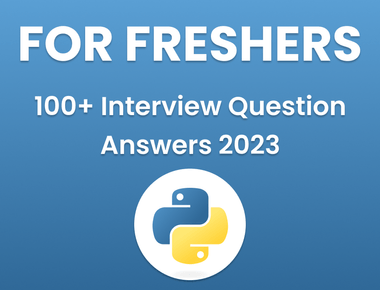
![[Solved] Fixing cmdline-tools component is missing Error in Flutter](/static/5d3e4af1ce190657880b21aac3c2ae31/f6053/fixing-cmdline-tools-component-is-missing-error-flutter.png)
